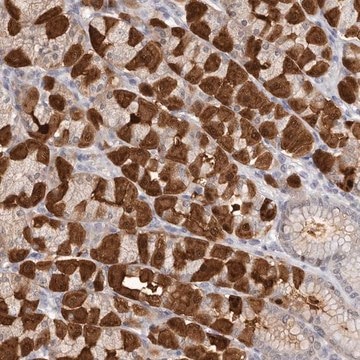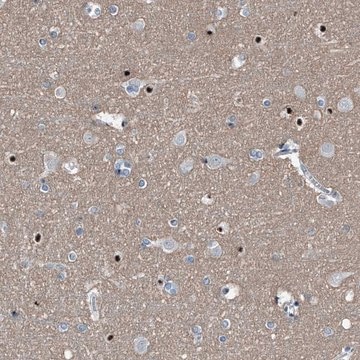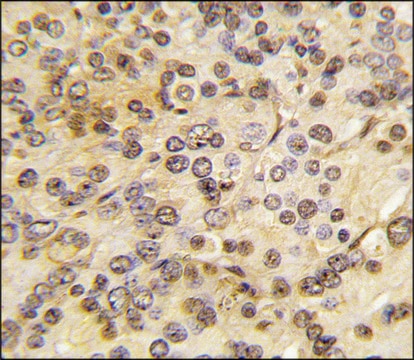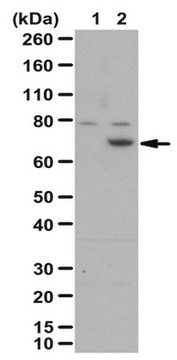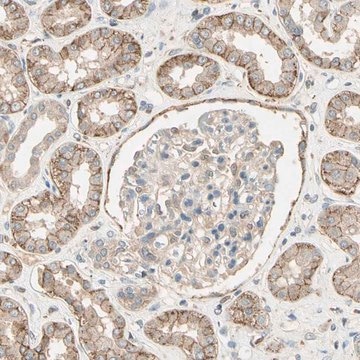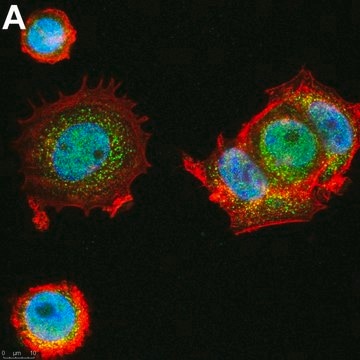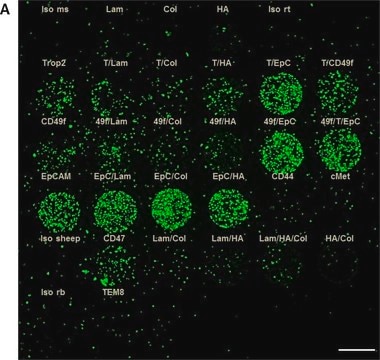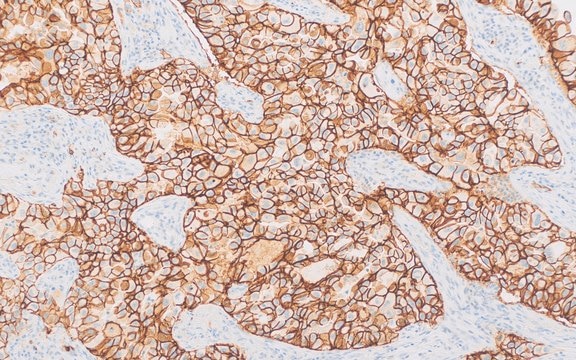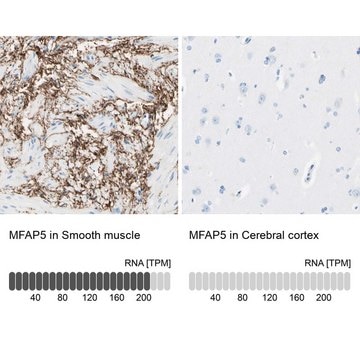General description
We are committed to bringing you greener alternative products, which adhere to one or more of The 12 Principles of Green Chemistry.This antibody is Preservative-free, produced without the harm or sacrifice of animals and exceptionally stable to allow for ambient shipping and storage if needed and thus aligns with "Waste Prevention", "Designing Safer Chemicals" and "Design for Energy Efficiency".
Click here for more information.
ZooMAb® antibodies represent an entirely new generation of recombinant monoclonal antibodies.Each ZooMAb® antibody is manufactured using our proprietary recombinant expression system, purified to homogeneity, and precisely dispensed to produce robust and highly reproducible lot-to-lot consistency. Only top-performing clones are released for use by researchers. Each antibody is validated for high specificity and affinity across multiple applications, including its most commonly used application. ZooMAb® antibodies are reliably available and ready to ship when you need them.
Specificity
Clone 1D2 is a ZooMAb® Rabbit recombinant monoclonal antibody that specifically detects Menin. It targets an epitope within 26 amino acids from the C-terminal region.
Immunogen
KLH-conjugated linear peptide corresponding to 26 amino acids from the C-terminal region of human Menin.
Application
Quality Control Testing
Evaluated by Western Blotting in NIH3T3 cell lysate.
Western Blotting Analysis: A 1:10,000 dilution of this antibody detected Menin/MEN1 in NIH3T3 cell lysate.
Tested applications
Western Blotting Analysis: A 1:10,000 dilution from a representative lot detected Menin/MEN1 in HT29, HEK293, Jurkat, and L6 cell lysates.
Immunohistochemistry (Paraffin) Analysis: A 1:100 dilution from a representative lot detected Menin/MEN1 in human colon tissue sections.
Immunocytochemistry Analysis: A 1:100 dilution from a representative lot detected Menin/MEN1 in HEK293 cells.
Affinity Binding Assay: A representative lot of this antibody bound Menin peptide with a KD of 7.0 x 10-9 in an affinity binding assay.
Note: Actual optimal working dilutions must be determined by end user as specimens, and experimental conditions may vary with the end user
Target description
Menin (UniProt: O00255) is encoded by the MEN1 (also known as SCG2) gene (Gene ID: 4221) in human. Menin is ubiquitously expressed, but its function is reported to be tissue-specific, sometimes displaying opposing roles between different organs. It is primarily localized in the nucleus, but lesser amounts may be present in the cytoplasm and cell membrane. Its nuclear localization sequences are located in its C-terminal region and can directly interact with DNA in a sequence-independent manner. Although Menin acts as a tumor suppressor in endocrine organs, it is required for leukemic transformation in mouse models. It is an essential component of MLL/SET1 histone methyltransferase (HMT) complex, a complex that specifically methylates lysine 4 of histone H3 (H3K4). It also functions as a transcriptional regulator. The crystal structure of Menin looks like a curved left hand, wherein the N-terminal domain is represented by long β-hairpin, transglutaminase-like domain that resembles a thumb, the middle region adopts the shape of the palm, and the C-terminus resembles curved fingers. The palm region forms a deep pocket that is occupied by the conserved MLL1 peptide. Menin is also shown to bind to the TERT promoter and represses telomerase expression. It also plays a role in TGF-β1-mediated inhibition of cell-proliferation, possibly by regulating SMAD3 transcriptional activity. Mutations in MEN1 gene have been linked to familial multiple endocrine neoplasia type 1 that is characterized by tumors of the parathyroid glands, gastro-intestinal endocrine tissue, the anterior pituitary, and other tissues. MEN1 inactivating mutations are responsible for hyperfunctioning of the parathyroid glands and subsequent primary hyperparathyroidism. Primary hyperparathyroidism can occur in isolation or in association with multiple endocrine neoplasia. Three isoforms of Menin have been described that are produced by alternative splicing. This ZooMAbZooMAb® recombinant monoclonal antibody, generated by our propriety technology, offers significantly enhanced specificity, affinity, reproducibility, and stability over conventional monoclonals. (Ref.: Matkar, S., et al. (2013). Trends Biochem. Sci. 38(8); 394-402; Siradanahalli, C., et al. (1998). Proc. Natl. Acad. Sci. USA. 95(4); 1630-1634).
Physical form
Purified recombinant rabbit monoclonal antibody IgG, lyophilized in PBS, 5% Trehalose, normal appearance a coarse or translucent resin. The PBS/trehalose components in the ZooMAb formulation can have the appearance of a semi-solid (bead like gel) after lyophilization. This is a normal phenomenon. Please follow the recommended reconstitution procedure in the data sheet to dissolve the semi-solid, bead-like, gel-appearing material. The resulting antibody solution is completely stable and functional as proven by full functional testing. Contains no biocide or preservatives, such as azide, or any animal by-products. Larger pack sizes provided as multiples of 25 μL.
Reconstitution
300 μg/mL after reconstitution at 25 μL per vial. Please refer to guidance on suggested starting dilutions and/or titers per application and sample type.
Storage and Stability
Recommend storage of lyophilized product at 2-8°C; Before reconstitution, micro-centrifuge vials briefly to spin down material to bottom of the vial; Reconstitute each vial by adding 25 μL of filtered lab grade water or PBS; Reconstituted antibodies can be stored at 2-8°C, or -20°C for long term storage. Avoid repeated freeze-thaws.
Legal Information
ZooMAb is a registered trademark of Merck KGaA, Darmstadt, Germany
Disclaimer
Unless otherwise stated in our catalog or other company documentation accompanying the product(s), our products are intended for research use only and are not to be used for any other purpose, which includes but is not limited to, unauthorized commercial uses, in vitro diagnostic uses, ex vivo or in vivo therapeutic uses or any type of consumption or application to humans or animals.

